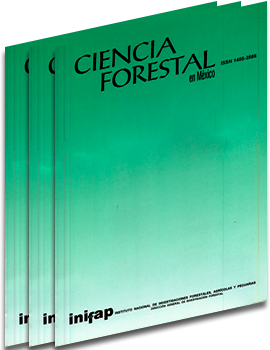ANATOMÍA DE LA INTERACCIÓN Cladocolea loniceroides (Van Tieghem) Kuijt – Salix bonplandiana Kunth
Keywords:
Cladocolea loniceroides, haustorium, host, mistletoe, Salix bonplandiana, system endophyticAbstract
Few are the parasite plants responsible of important forest deseases; they are the third cause of harm and they produce the loss of more than 2 million square meters of wood. Cladacolea loniceroides is a hemiparasitic mistletoe that affects about 15 species of trees just in Mexico City, and it is one of the major decline agents of the health of many shrubs. At the lake site of Xochimilco, this species has caused many problems to Salix bonplandiana, which is the most representative tree of this emblematic lake zone of Distrito Federal. Since this mistletoe produces an infection on the trunk and branches, the vigour and aesthetics of the trees has been seriously affected, which, when very intense, can induce death. As there are no results about the histhopathological problems that this parasite generates upon the willow, the main purpose of the actual research was to study the anatomy of the C. loniceroides-S. bonplandiana interaction. Observations made it possible to determine that the endophytic system of C. Loniceroides is made up of a simple or primary haustorium with a wedge shape. Its penetration does not generate necrosis, but it does produce xilematic cell displacement of the host, and, consecuently, a modification of its physiology.
Downloads
Downloads
Published
How to Cite
Issue
Section
License
The authors who publish in Revista Mexicana de Ciencias Forestales accept the following conditions:
In accordance with copyright laws, Revista Mexicana de Ciencias Forestales recognizes and respects the authors’ moral right and ownership of property rights which will be transferred to the journal for dissemination in open access.
All the texts published by Revista Mexicana de Ciencias Forestales –with no exception– are distributed under a Creative Commons License Attribution-NonCommercial 4.0 International (CC BY-NC 4.0), which allows third parties to use the publication as long as the work’s authorship and its first publication in this journal are mentioned
The author(s) can enter into independent and additional contractual agreements for the nonexclusive distribution of the version of the article published in Revista Mexicana de Ciencias Forestales (for example, include it into an institutional repository or publish it in a book) as long as it is clearly and explicitly indicated that the work was published for the first time in Revista Mexicana de Ciencias Forestales.
For all the above, the authors shall send the form of Letter-transfer of Property Rights for the first publication duly filled in and signed by the author(s). This form must be sent as a PDF file to: ciencia.forestal2@inifap.gob.mx
This work is licensed under a Creative Commons Attribution-Noncommercial 4.0 International license.


